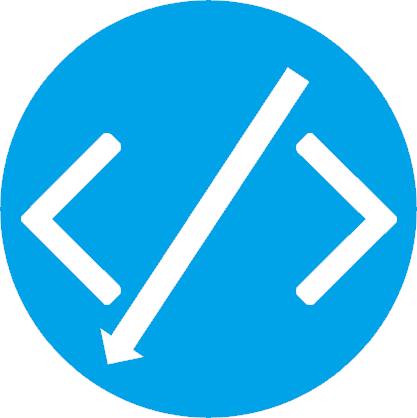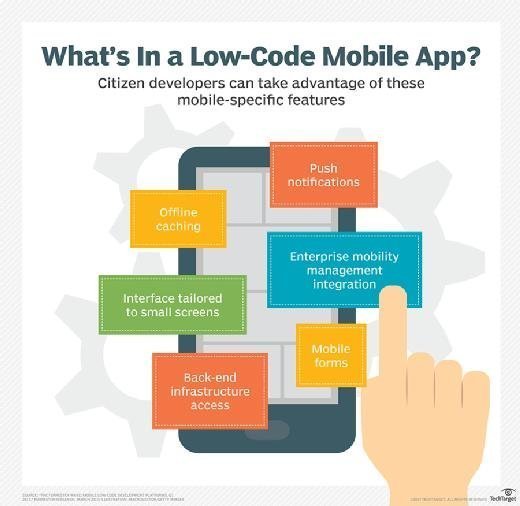Best News For Choosing Low-Code Platform Recommendations
Wiki Article
The Benefits Of Low-Code Development For Non-Developers In Terms Of Accessibility
Low-code app development improves accessibility by non-developers (often referred to "citizen-developers") because of several key elements.
Drag-anddrop Builders: Lowcode platforms provide drag-and-drop interfaces, which let non-developers create visual applications, without having to code. This makes development easier for people with backgrounds in technology.
WYSIWYG editors: These "What You See is What You Get" editors allow users to build interfaces and workflows that are similar to the finished version. This makes it much easier to learn and use.
Simplified Workflow and Logic Design:
Visual Workflow Modeling: Users may create business processes and application logic by using visual flowcharts or models, which are more intuitive than the traditional methods of coding.
Pre-built Logic Components: Low-code platforms often have pre-built logic elements (e.g., conditional statements loops) that are easily configured, reducing the need for complex coding.
Templates and components that can be reused:
Library of Templates Pre-built: Many platforms that offer low-code also have a library of template types for the most common applications. This allows developers to start quickly and efficiently and non-developers to modify the templates however they see the need.
Reusable Widgets and Modules Users can leverage reusable widgets and modules which can be created faster, reducing the time needed to create them and reducing the need for technical knowledge.
Guided Development and Tutorials:
Step-by step guides: Platforms offer tutorials, tips on screen, and development guides to help non-developers build applications.
Interactive Tutorials Interactive tutorials are hands-on and interactive, which help users to learn through doing. This boosts the confidence of users in the platform.
Integration with existing tools
Seamless Integration: Low-code platforms are designed to seamlessly integrate with the tools and systems within business (e.g. the ERP or CRM), which lets non-developers to develop applications that work with current workflows.
APIs/Connectors: These APIs/Connectors allow non-developers to connect their applications to external services.
Collaboration Features:
Team Collaboration: Features like real-time collaboration and shared workspaces allow non-developers to collaborate with business analysts, professional developers, and other stakeholders effectively.
Access levels can be set for those who are not developers to ensure they can still contribute to development, without jeopardizing security.
Automated testing and debugging:
Low-code platforms are usually equipped with testing and debugging software that automatizes these processes. This makes it much easier for non-developers to ensure that the functionality of their apps.
Platform detects problems when they occur and offers fixes. This helps non-developers with solving problems.
In general, low-code application development has the ability to open up development to a wider audience. This is an important benefit for those who aren't developers. Low-code platforms allow businesses to take part in the development and maintenance of apps by offering visual tools as well as a guiding user experience. This helps bridge the gap between the technical implementation and business needs. Follow the recommended more about the author for Low-code Platform for application development for more recommendations including developing mobile apps, paas service, cross platform mobile app development, push notifications, database in azure, paas service, cross platform mobile dev, develop web app, azure sql, multiplatform mobile app development and more.

The Advantages Of Low-Code Development In Terms Of Flexibility, Scalability And Scalability
Low-code applications have a number of advantages in terms of scalability. They are flexible and can be modified to meet new demands. Here are a few key advantages.
Cloud-based deployment : Many low-code platforms are based. This lets applications expand seamlessly with cloud infrastructure. This allows companies to handle an increase in load without worrying about managing servers.
Auto-Scaling: The auto-scaling feature will automatically adjust the resources according to the demand. This will ensure the same performance even during peak hours with no manual intervention.
Flexible Architecture:
Modular Application Design: A low-code platform encourages modular design of applications. Components can be independent evaluated, designed and expanded. This modularity enhances flexibility and allows to upgrade or expand certain components of a program without affecting the entire system.
Microservices Integration : Supporting microservices architecture, applications can be built using loosely-coupled services to increase both flexibility and scalability.
Customizable Solution:
Flexibility : Low-code platforms enable developers to expand functions beyond what they are able to provide. This allows for unique business needs to be met with no restrictions.
Third-Party Integrations: Companies are able to add additional functionality and features into their apps by integrating APIs and third-party providers.
Agile Development Deployment, Agile Development and Agile Development:
Continuous Delivery and Deployment : Low-code platforms can support agile methodologies that allow continuous integration and continuous delivery (CI/CD). This enables rapid release of updates and features. Applications can then evolve rapidly in response to market developments and feedback from users.
Iterative Development - This low-code model allows applications to be enhanced and scaled up incrementally which reduces risk and allows for more controlled growth.
Resource Optimization
Efficiency in Resource Management: Low Code platforms can optimize resource usage through tools that monitor and control the performance of applications. This enables resources to be utilized efficiently and also to be increased or decreased according to the need.
Load-balancing features that distribute workloads equally across servers enhance the capacity of applications to handle large volumes of traffic and ensure a consistent performance.
Global Reach:
Multi-Region availability: Lowcode platforms permit for deployment across multiple regions. Companies can provide users with low-latency access to the world. This is crucial, particularly for applications that serve global users.
Localization Support built-in support for localization allows applications to easily adapt to various local languages and requirements which allows them to adapt to diverse markets.
Updates and maintenance
Simplified Maintenance: The visual and modular design of low-code software makes maintenance easier which allows upgrades and bug fixes to be implemented quickly without lengthy downtime.
Version Control: Integrated Version Control System helps to control changes and roll backs. This makes sure that updates can be easily deployed and previous versions restored when needed.
Cost Efficiency:
Low-code platforms cut down on development costs because they eliminate the need for complex coding. They can also allow you to scale applications without need for a significant cost or effort.
Pay-as-you go models: Many platforms for low-code offer flexible pricing options, including pay-as we-go models that align prices and usage with the actual growth.
The majority of low-code application developers provide a lot of flexibility and scalability which lets businesses quickly create robust and flexible apps. These platforms provide quick responses to changing requirements, resource efficiency, and constant improvements, which allows the application to expand as a company. See the top rated Enterprise application development with Low-code Platform tips for more recommendations including azure sql server, develop web app, no code platforms, microsoft azure sql, rapid applications, app modernization, jdbc server, jdbc server, microsoft azure sql, mobile app development platforms and more.

The Benefits Of Low-Code Development To Collaborate And Streamline Workflow
It's a great option for companies that wish to boost team productivity, streamline processes and improve collaboration. Here are the top advantages: Improved Collaboration Across Functions:
Unified Development Environment Low-code platform provides an all-in-one environment where all members of the team, including developers, analysts, designers, stakeholders and other stakeholders, can easily work together. This eliminates silos and fosters better communication.
Visual Development The platform's visual drag-anddrop capabilities make it easy for nontechnical team participants to be involved in the process of design. It also ensures business requirements are captured correctly and implemented.
Communication Enhanced:
Real-Time collaboration: Many low code platforms provide real-time communications features, including simultaneous editing and comments. Instant feedback is also provided. This can help reduce the time required to have a back and forth conversation.
Workspaces shared by teams are able to work in tandem on shared workspaces where they can modify and discuss project components. This ensures that everyone is striving for the same objectives and is on the exact same page.
Streamlined Workflow Management:
Built-In Tools for Project Management: Platforms that are low-code often have integrated tools for managing projects that aid teams in planning, track, and manage their development initiatives. This includes task assignments, progress tracking, and management of deadlines.
Workflow Automation Automating repetitive tasks and workflows can reduce manual errors and effort and allow the team to focus on more strategic work while increasing efficiency.
Faster Iteration:
Rapid Prototyping: Low-code platforms enable rapid prototyping. They also permit rapid and iterative development. This allows teams to develop apps, test them and refine them within a shorter period of time. This provides rapid feedback and further improvement.
Agile Development Support: Supporting agile methods allows teams and individuals to work in small increments. This can also allow you to quickly adapt to changes.
Accessibility for non-developers
Citizen development: Low-code platforms enable business users to modify and develop applications without extensive programming knowledge. This relieves IT and Development teams of the burden and gives them the ability to respond faster to business requirements.
Training and Onboarding - Simple interfaces, comprehensive training materials and intuitive interfaces make it easier to help new members to get up to speed and enhance the overall team's collaboration.
Centralized Documentation & Knowledge Sharing
Low-code platforms usually include tools for creating, managing and storing documentation within their platforms. This allows the entire project's information to be centrally stored and accessible easily.
Knowledge Repositories. Teams can establish repositories for knowledge, including templates and reusable parts. This will help facilitate sharing of knowledge and will reduce the amount of duplicate information.
Consistency Standardization, Consistency and Standards:
Standardized Components. Standardization of components across different applications ensures consistency, which makes it easier to work and understand by team members.
Governance and Compliance: Built-in governance structures ensure that every development follows the organizational guidelines and regulations, reducing the risk of non-compliance and ensuring that applications meet the quality standards.
Feedback and Improvement
Integrated Feedback Low-code platforms offer users with feedback mechanisms integrated into them that enable them to provide easy feedback on applications. This feedback can be then incorporated into the application development process.
Continuous Improvements: The ability for software to rapidly iterate and then implement changes in light of user feedback, making sure that they are in tune with the user's needs and the business goals.
Visualization and Reporting
Real-time Analytics: In-built analysis and reporting provides real time insights into the project's performance, user interaction and the progress. Decision-making based on data is possible.
Visual Workflow Mapping Visual tools that visualize workflows and processes can help teams improve their workflow by identifying bottlenecks.
Low-code development of applications can be a very effective tool for collaboration and workflow. It connects different teams, streamlines communication, and automates processes. This creates a more flexible, collaborative and efficient environment for development. This eventually will result in higher quality applications as well as better alignment of goals for business.
